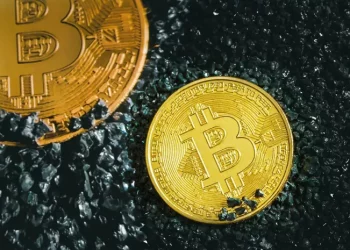Golden Finance reports that according to informed sources, a little-known company at the core of the US financial system – the American Securities Depository Trust Company (DTCC) – is currently actively exploring the issuance of a stablecoin. If this plan is implemented, it is highly likely to accelerate the application process of digital assets in various markets.
As a clearing institution responsible for handling stock transactions in the United States, DTCC holds a pivotal position in the financial field. Its daily work involves multiple key links such as the clearing, settlement and asset custody of securities trading, and plays an indispensable role in maintaining the stable operation of the US financial market.
Stablecoins, as a special type of digital currency, are usually pegged to fiat currency or other assets, aiming to maintain the relative stability of their value. In recent years, with the continuous development of the cryptocurrency market, stablecoins have gradually gained favor among investors and market participants due to their advantages in transaction settlement, fund storage and other aspects. For instance, in the field of cross-border payments, stablecoins can simplify the payment process, reduce transaction costs and enhance payment efficiency. In cryptocurrency trading, stablecoins are often used as a medium of exchange, helping investors switch between different crypto assets and also providing a certain level of liquidity support for the market.
At present, there are already various stablecoins in the market, such as USDT and USDC, which are pegged to the US dollar. These stablecoins play a significant role in the digital currency ecosystem, but their development also faces many challenges, including regulatory compliance, transparency of reserve assets, and market volatility risks, etc. Take 2022 as an example. The algorithmic stablecoin TerraUSD (UST) lost its peg to the US dollar in a short period of time due to design flaws and market shocks, with its value nearly dropping to zero. This triggered severe turmoil in the cryptocurrency market, causing significant losses to many investors and making the regulatory issues of stablecoins a focus of global financial regulatory authorities.
For DTCC, exploring the issuance of stablecoins holds multiple potential significances. On the one hand, from the perspective of transaction settlement, the application of stablecoins is expected to further optimize the transaction process. In traditional securities trading, the settlement process often involves multiple links and institutions, taking a long time and incurring high costs. Stablecoins, based on the characteristics of blockchain technology, can achieve real-time, peer-to-peer transaction settlements, significantly shortening the settlement cycle and reducing counterparty risks. For instance, in stock trading, using stablecoins for settlement enables both parties to complete the delivery of funds and securities more quickly, thereby enhancing the overall operational efficiency of the market. On the other hand, from the perspective of market innovation, the introduction of stablecoins may bring new business models and investment opportunities to the financial market. It can encourage financial institutions to develop more innovative products and services related to digital assets, attract more investors to participate in market transactions, and thereby promote the diversified development of the financial market.
However, DTCC’s issuance of stablecoins also faces a series of severe challenges. In terms of regulation, the issuance and operation of stablecoins are subject to strict financial regulatory constraints. Regulatory authorities such as the U.S. Securities and Exchange Commission (SEC) have extremely high compliance requirements for stablecoins, including the regulation of reserve assets, the implementation of anti-money laundering and anti-terrorist financing (AML/CFT) measures, and investor protection, among other aspects. DTCC needs to ensure that its stablecoin project fully complies with relevant regulatory requirements; otherwise, it will face huge legal risks. In addition, market acceptance is also a key issue. Although stablecoins have been applied to a certain extent in the cryptocurrency field, it is not easy for them to gain wide recognition in traditional financial markets. Investors’ trust in stablecoins is built on multiple factors, such as currency stability, the credibility of the issuing institutions, and market liquidity. DTCC needs to gradually enhance the market’s acceptance of its stablecoin through effective marketing promotion and operation strategies.
At present, DTCC has not released an official statement regarding the stablecoin exploration plan. The specific project details, such as the design architecture, issuance mechanism, and application scenarios of the stablecoin, are also unknown for the time being. However, given DTCC’s significant position in the financial industry, its stablecoin exploration actions have drawn high attention both within and outside the industry. In the future, as this plan progresses, it may have a profound impact on the landscape of the financial market in the United States and even globally. Whether it is the business model of financial institutions, the asset allocation of investors, or the direction of financial regulatory policies, all may change as a result.
Related Topics:














